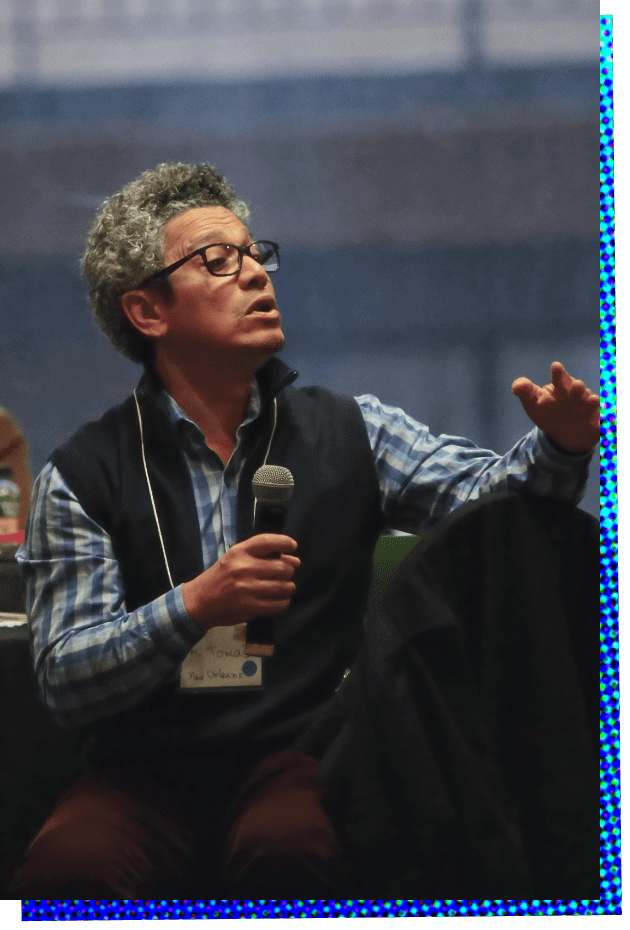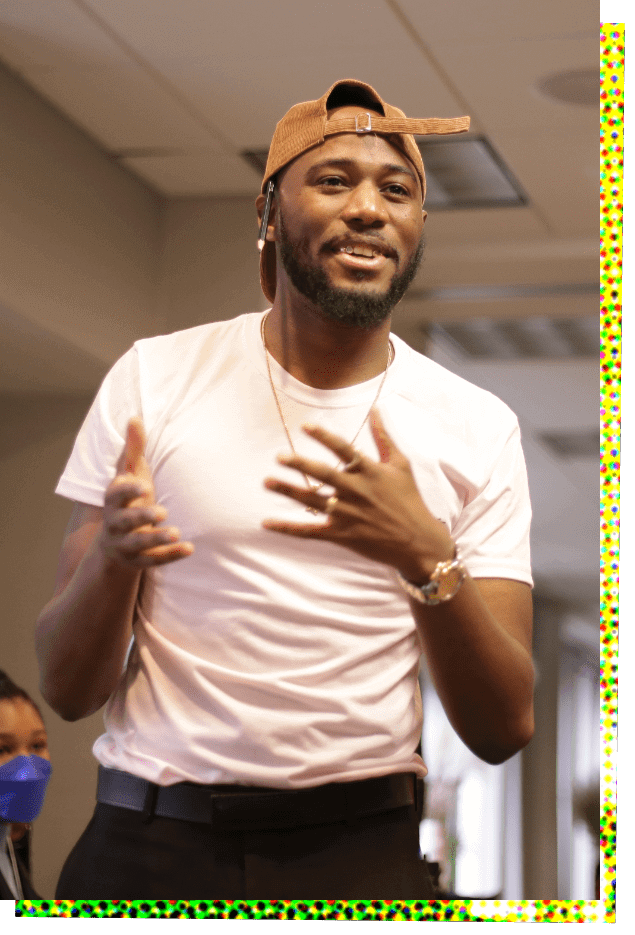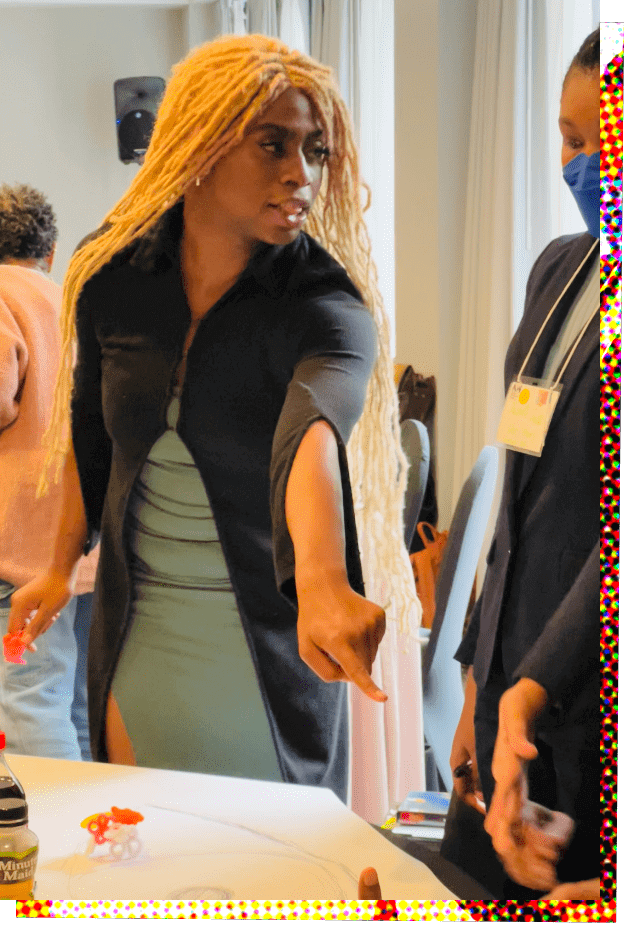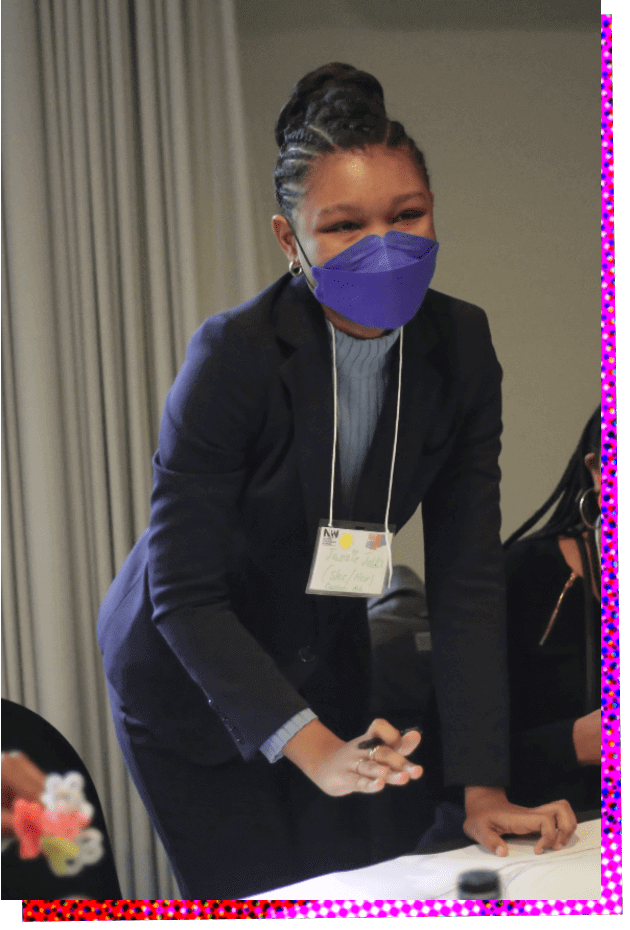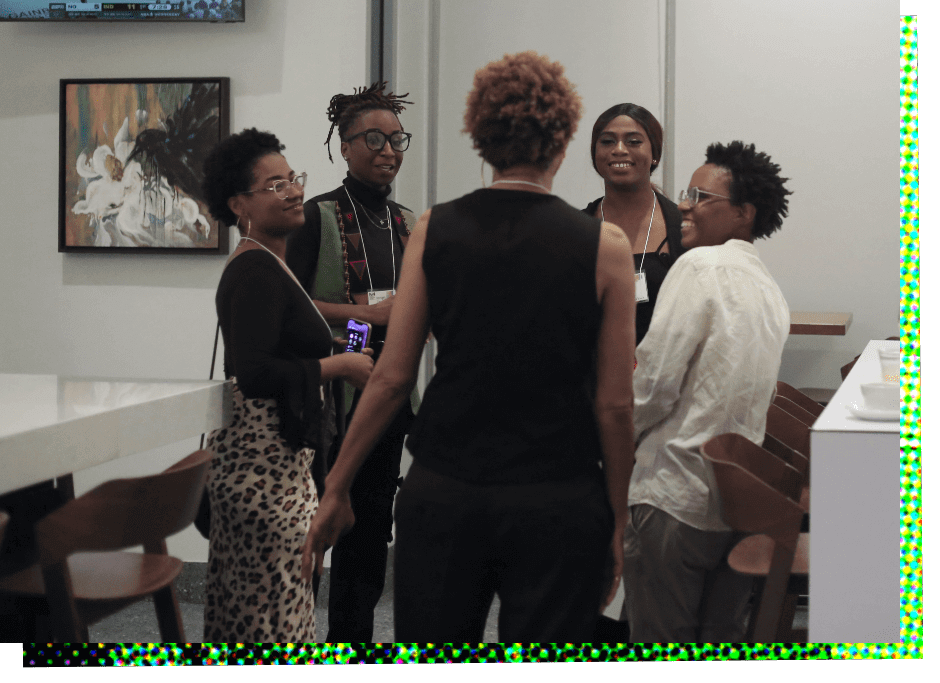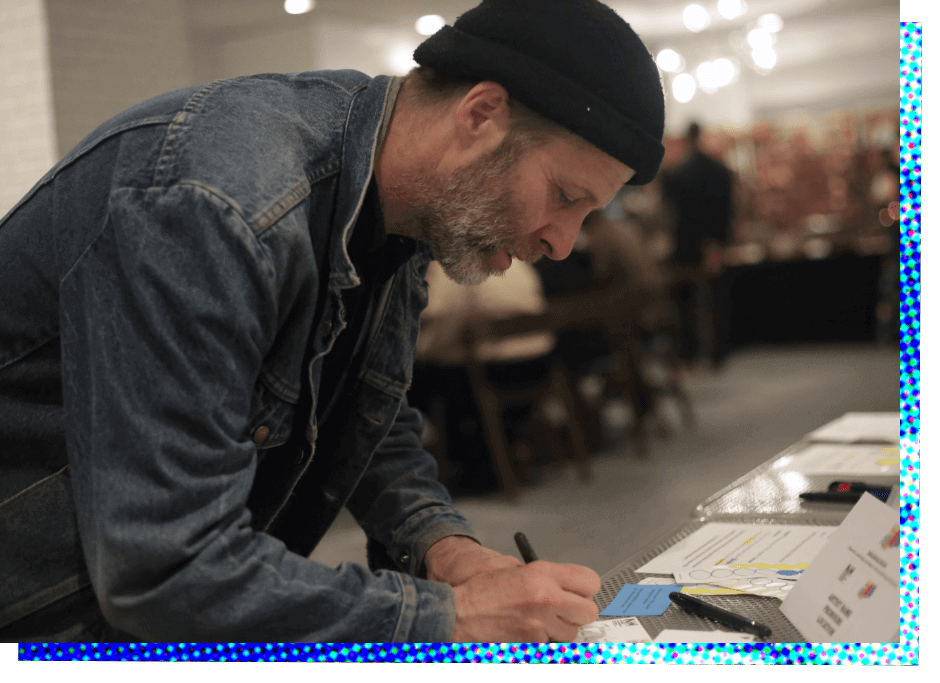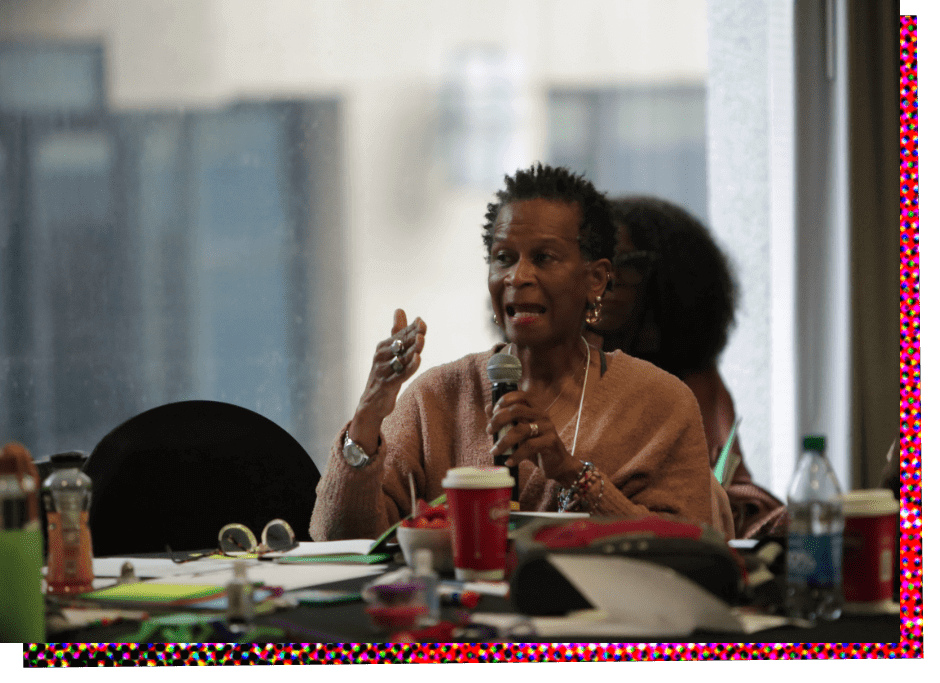Celebrating Radical Imagination at the Southern Artists for Social Change Gathering, February 2024
May 2, 2024 • 4 minute read
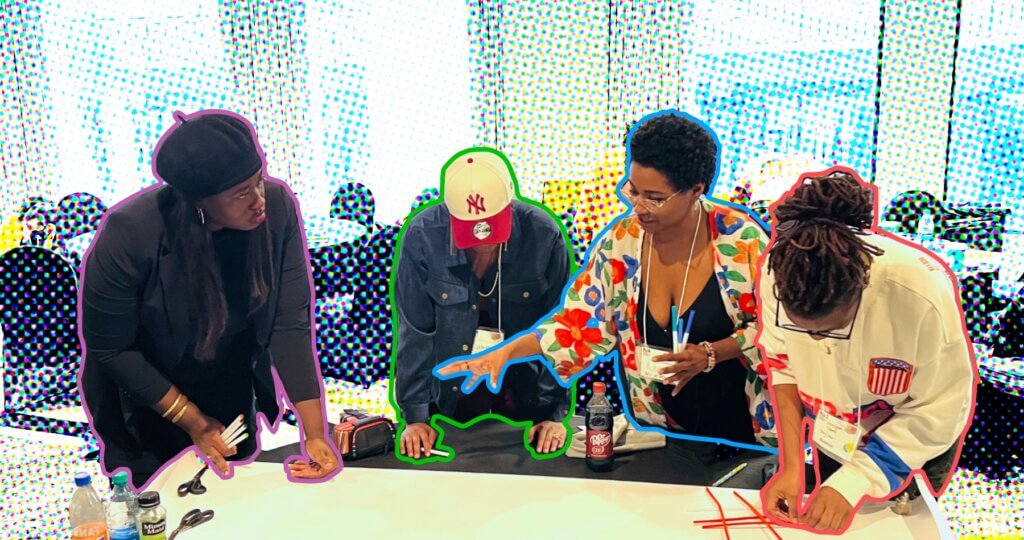
“When I look around the room, this is what I imagine heaven will look like when I get there…”
–SA4SC Artist
Text and photos by Daniel Pruksarnukul.
As NPN’s newest staff member, the Southern Artists for Social Change gathering in February was my first introduction to the artistic community that NPN supports.
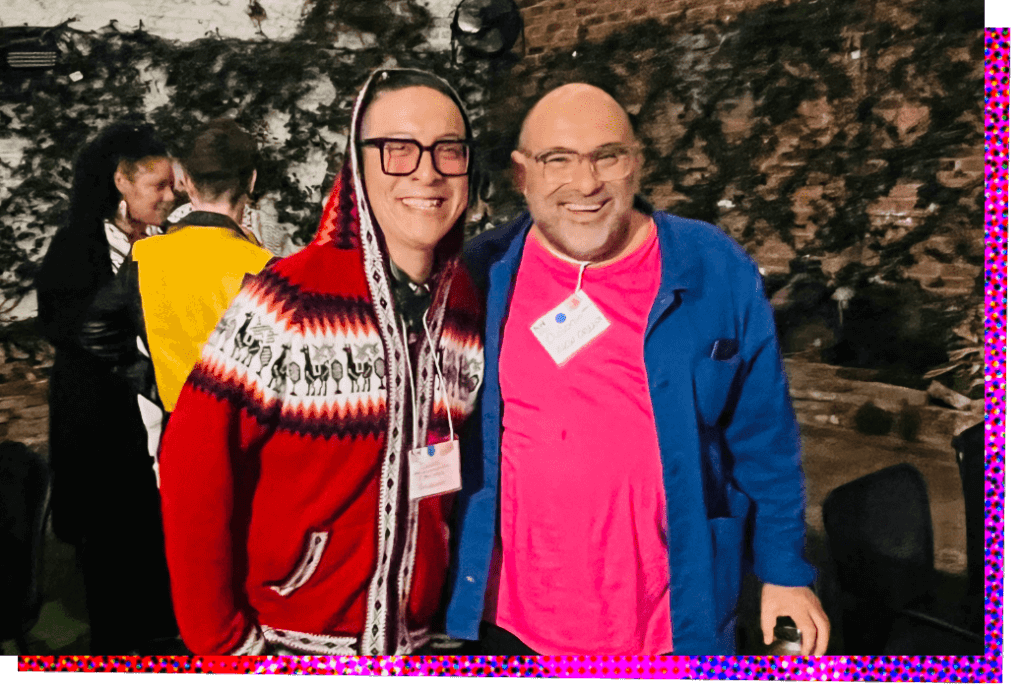
It was also the first time these 41 incredible artists were going to meet in person. And what happens when you gather 41 creative geniuses for 2 & ½ days who have a deep civic practice rooted in social change and whose work relies on radical imagination to create vibrant futures? Connections get made, inspiration abounds, and, at some point, someone is going to lead a dance-off.
It was amazing to witness. While all of their work was wildly different, the artists were all connected through their values. Getting a chance to be in community with four cohorts of Southern Artists for Social Change artists gave me so much courage and audacity, but also drove home the program’s importance, how amazing the artists NPN supports are, and why being in service to the field through NPN has been such a blessing for me at this moment in my life.
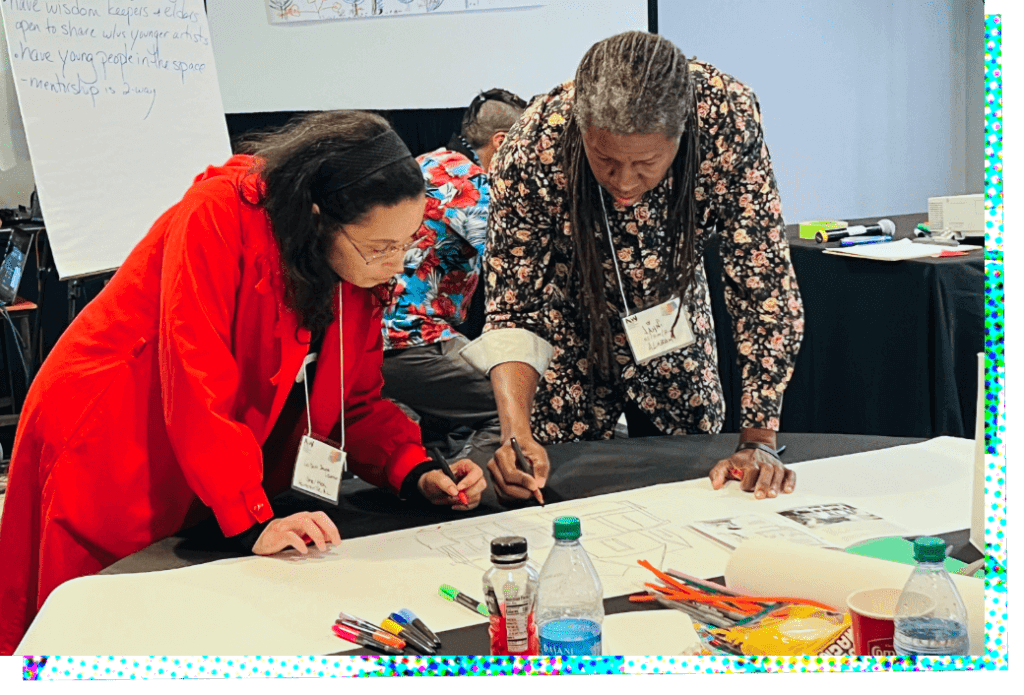
When I started in January, one of my first assignments was to pull together information for a press release. This project had me reviewing all of the application materials of the latest cohort, pouring over program descriptions, work samples, and previous cohort announcements.
While getting up to speed on the style guide and formatting of the boilerplate, I also got to learn about the incredibly rich and diverse type of work that this program has supported for three years.
It was inspiring to soak in all of these beautiful and powerful ideas. From Carey Fountain’s Black Cherry Tree Project with its way of honoring African Americans who have been lynched by planting Cherry Trees and sharing their stories and Jeri Hilt’s work, Bury ‘Em Deep: An Avalanche of Turquoise, on the repatriation and return of Ancestral human remains from cultural institutions, to Ausettua AmorAmenkum’s work in Sacred Wellness 360 which collaborates with formerly incarcerated women as they reenter their families and communities, all of the work was so deep, so important, so moving, and can’t be easily labeled.
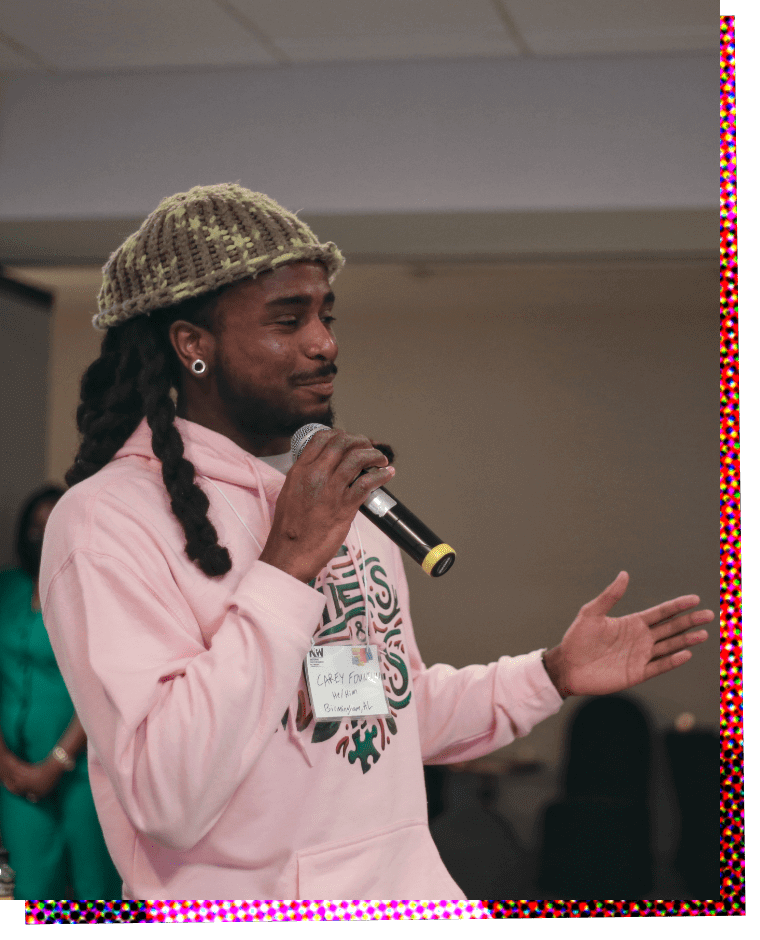
They aren’t projects that are meant to be commercially successful or play to a massive audience, but they have an enormous impact on the communities they serve.
There were water maps, zines on Sex Ed for TGNC folx in the Deep South, and mutual aid funds for Black LGBTQIA+ folx. There were mobile pirate radio stations, land-based initiatives for low-income farmers, and artistic residencies for young Queer BIPOC folx aiming to foster healthy intimacy for themselves & their communities.
And there was JOY. Joy in the rigor of the work. Joy in the communities each project serves. Joy in getting to meet each other and spark off of each other because, with these types of projects, there are no “closing nights.”
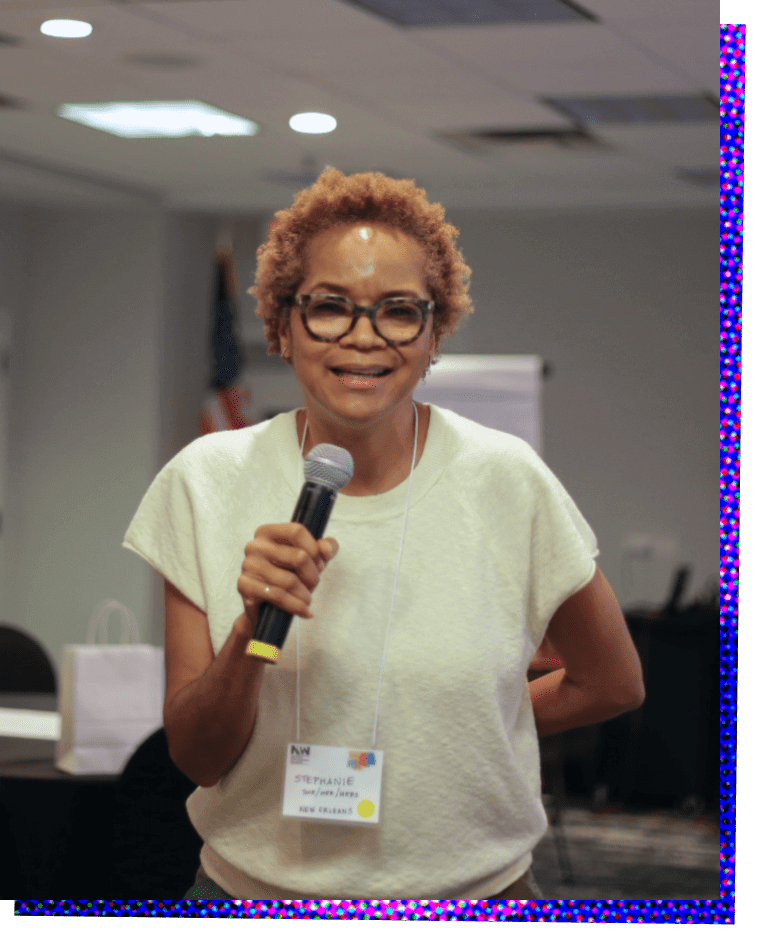
Each project is deeply invested in trying to create transformational change which doesn’t happen overnight or even within a grant cycle. Each project seeks to serve as an instrument of civilization and can change someone’s life forever.
At the end of our time, we were brought together to close out with congregational singing. While I grew up going to Mass, this is one of the closest feelings I’ve ever gotten to going to church. And just as we were about to break, someone was inspired to remind us to honor the bounce tradition of New Orleans and we twerked our way through the circle to close.
It was a moment of pure joy and release through dance and song and it served as a reminder that we are not alone in this work, that we are all travelers on this journey towards collective liberation with our guiding stars being our Core Values which lead our way.
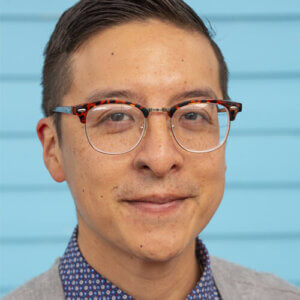
Daniel Pruksarnukul is a Program Assistant for National Performance Network and Creative Producer for Mondo Bizarro.
